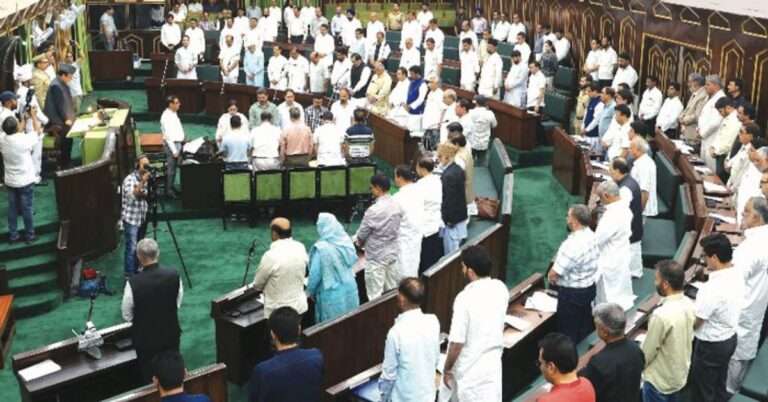
**Rising Prices in Karnataka: A-Z of Recent Hikes**
Have you noticed the recent surge in prices in Karnataka? From essentials to luxuries, it seems like everything is getting more expensive. Let’s break down the ABCs of these price hikes and understand what’s causing them.
**A – Agriculture**
One of the major factors driving up prices in Karnataka is the impact on agriculture. Climate change, unpredictable weather patterns, and the rising costs of inputs like seeds and fertilizer have all contributed to a decrease in crop yields. As a result, farmers are forced to raise prices to compensate for their losses.
**B – Basic Necessities**
Essential items like rice, vegetables, and pulses have seen a significant increase in prices. This has put a strain on the budgets of many households, especially those with lower incomes. Families are now having to make tough decisions about where to cut back to make ends meet.
**C – Consumer Goods**
Not just limited to food items, consumer goods like electronics, clothing, and household items have also seen price hikes. Manufacturers and retailers are passing on the increased costs of production and transportation to consumers, further adding to the burden of rising prices.
**D – Demand and Supply**
The basic economic principle of demand and supply also plays a role in the price hikes. As demand for certain products increases while the supply remains constant or decreases, prices naturally go up. This imbalance in the market has created a situation where consumers are paying more for the same goods and services.
**E – Economic Policies**
Government policies and regulations also have a significant impact on prices. Changes in taxation, import/export duties, and subsidies can all affect the cost of goods in the market. Understanding how these policies influence prices can help us better navigate the current scenario.
**F – Fuel Prices**
The cost of fuel plays a vital role in determining the prices of goods and services. With the fluctuating prices of petrol and diesel, transportation costs have surged, leading to an increase in the prices of essential commodities. This ripple effect is felt across various sectors, affecting consumers at large.
**G – Global Factors**
Global factors like inflation, exchange rates, and geopolitical events also influence prices in Karnataka. The interconnected nature of the world economy means that what happens on the other side of the globe can have a direct impact on our local prices. Keeping an eye on these global trends can help us anticipate future price hikes.
**H – Housing**
The real estate market in Karnataka has also witnessed a surge in prices. With increased demand for residential and commercial properties, the cost of housing has skyrocketed. This has made it challenging for individuals and families to afford suitable accommodation, leading to a housing crisis in some areas.
**I – Inflation**
Inflation, the general increase in prices across the economy, has been a key factor driving up prices in Karnataka. As the purchasing power of the rupee decreases, consumers are forced to pay more for the same goods and services. This continuous rise in prices has a cascading effect on the overall economy.
**J – Jobs and Wages**
The relationship between jobs, wages, and prices is crucial in understanding the current price hikes. With stagnant wages and limited job opportunities, consumers are finding it harder to keep up with the rising cost of living. This disparity between incomes and expenses is putting a strain on households across Karnataka.
**K – Keeping Costs Down**
In the face of these price hikes, it’s essential to find ways to keep costs down. From budgeting wisely to seeking out discounts and deals, there are several strategies that consumers can adopt to mitigate the impact of rising prices. By being mindful of our spending habits, we can navigate these challenging times more effectively.
**L – Local Market Dynamics**
Understanding the local market dynamics is crucial in predicting and responding to price hikes. By staying informed about trends, shifts in demand, and seasonal variations, consumers can make informed decisions about when and where to make purchases. Being proactive and adaptable is key to managing rising prices.
**M – Mitigating the Impact**
While we may not be able to control the external factors driving up prices, we can take steps to mitigate their impact on our wallets. This could include exploring alternative options, reducing wastage, and prioritizing our spending. By being proactive and resourceful, we can better cope with the current price hikes.
**N – Negotiating Prices**
Don’t be afraid to negotiate prices, especially when making significant purchases. Many retailers and vendors are open to bargaining, particularly in markets and local shops. By honing your negotiation skills and being confident in asking for discounts, you may be able to save money on your purchases.
**O – Opportunities for Savings**
Look for opportunities to save money and cut costs wherever possible. This could include using coupons, taking advantage of sales and promotions, and comparing prices across different retailers. By being savvy about your spending, you can offset some of the effects of rising prices.
**P – Planning Ahead**
Planning ahead and budgeting for expenses can help alleviate the stress of rising prices. By setting aside a portion of your income for essential purchases and unexpected expenses, you can better prepare for the financial challenges ahead. This proactive approach can provide a sense of security in uncertain times.
**Q – Quality vs. Price**
When faced with rising prices, it’s important to strike a balance between quality and price. While opting for cheaper alternatives may seem like a quick fix, consider the long-term durability and effectiveness of the products you’re purchasing. Sometimes, investing in quality items can save you money in the long run.
**R – Resources for Assistance**
If you’re struggling to make ends meet due to rising prices, don’t hesitate to seek out resources for assistance. Government programs, community organizations, and local charities may offer support in the form of food assistance, financial aid, or guidance on managing your expenses. Remember, you’re not alone in facing these challenges.
**S – Support Local Businesses**
One way to combat rising prices is to support local businesses and producers. By shopping at farmers’ markets, small retailers, and independent artisans, you can often find quality products at competitive prices. Additionally, investing in local businesses helps stimulate the economy and create a sense of community resilience.
**T – Transparency in Pricing**
Demand transparency in pricing from retailers and service providers. Understanding the breakdown of costs and fees can help you make informed decisions about where to spend your money. If you have questions about pricing, don’t hesitate to ask for clarification or justification from the seller.
**U – Understanding Price Trends**
By staying informed about price trends and market fluctuations, you can anticipate future price hikes and adjust your spending accordingly. Keep track of the prices of essential items, monitor changes in the economy, and seek out expert analysis to help you navigate the complexities of pricing.
**V – Value for Money**
When making purchasing decisions, consider the value for money that a product or service offers. Is it worth the price you’re paying, or are there better alternatives available? By evaluating the quality, utility, and longevity of what you’re buying, you can make more informed choices about how to spend your money.
**W – Ways to Save**
Explore different ways to save money and reduce your expenses. This could include cutting back on non-essential purchases, finding more affordable alternatives, and maximizing the use of discounts and rewards programs. Small changes in your spending habits can add up to significant savings over time.
**X – X-Factor in Pricing**
The X-factor in pricing refers to the hidden costs and markups that may be present in the products and services you’re purchasing. By being aware of these additional expenses, you can make smarter decisions about where to spend your money and whether the price is justified based on the value you receive.
**Y – You Can Make a Difference**
Remember that as a consumer, you have the power to influence pricing through your choices and actions. By supporting businesses that offer fair prices, advocating for transparency, and demanding quality products, you can help shape the market and promote a more sustainable pricing environment for everyone.
**Z – Zeroing In on Solutions**
In the face of rising prices, it’s essential to zero in on practical solutions that can help you navigate this challenging landscape. Whether it’s through budgeting, negotiating, seeking assistance, or supporting local businesses, there are various ways to address the impact of price hikes and protect your financial well-being.
As we navigate the complexities of rising prices in Karnataka, remember that we’re all in this together. By staying informed, being proactive, and seeking out opportunities to save and support one another, we can overcome the challenges posed by these price hikes and emerge stronger on the other side.




